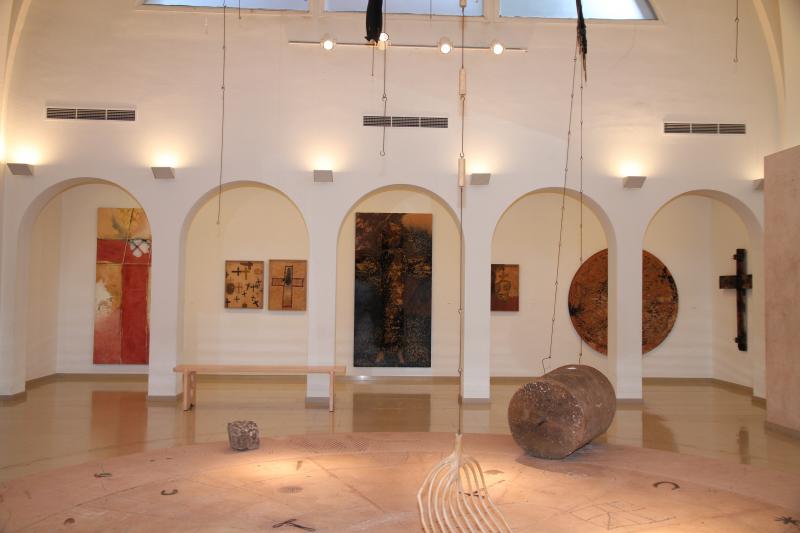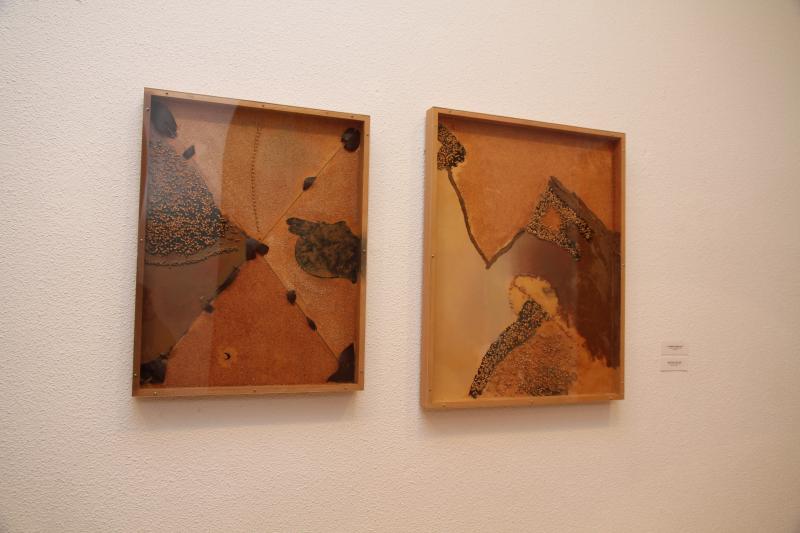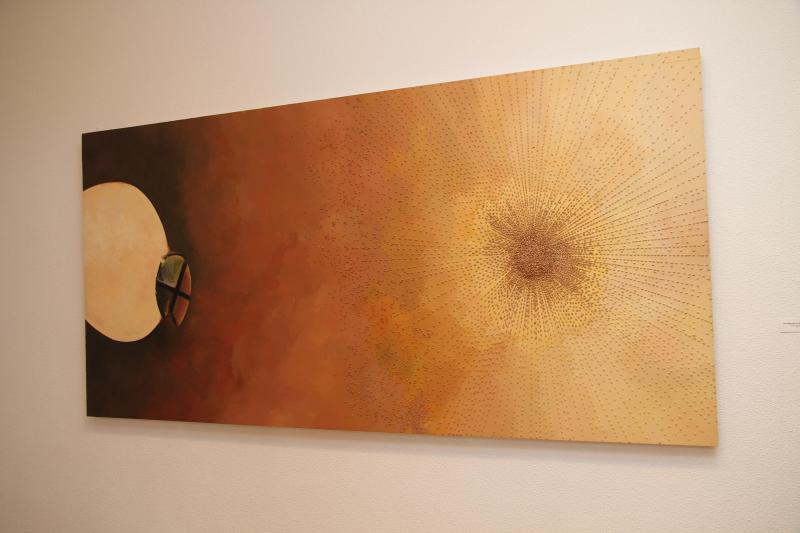Més enllà de la terra: el transcendent en l'obra de Guinovart
Josep Guinovart.
Guinovart's art realism is indisputable. But its conception of the real world, in confluence and even fusion with a deep vision that escapes what is typical of everyday life, is often disturbing. (...) And the way and the degree to which nature feels, along with the freedom that opens up to unexpected experiences, results in some works that have certain
connotations that, without being religious, touch a matter that burns up. Talking about the sacred is too ambiguous and has gone from being considered nefand to be used abusively, by fashion or lightness, banally. It would be less equivocal to say that works such as The Eye of Wheat and, above all, Untitled (1993) bring art to a profound level that puts in us too deep levels, which we can not name.
(1) José Corredor-Matheos
It is not unusual to observe the same Espai Guinovart d'Agramunt as a type of temple dedicated to nature and the work of men and women in the field: starting with the Mural dedicated to the four stations that preside the space and that It represents the passage of time through a circular movement without beginning or ending in four areas; going through the Cabana, the central half-closed space that protects the memory and the life of the ancestors, and ending the Era, an open circular space flanked by mirrors that extend the horizon, an original mud circle marked by deep incisions of Signs and lots of mobile sagetes pointing strongly from the height.
In this space, Guinovart managed to express his own myth, shape his mythology, encompass the exterior landscape of Agramunt inside a building while at the same time representing his own inner landscape, paradise lost and suffered from his childhood in the light of a maturity that, as he himself expressed, as time progressed, gave more light to mystery.
Throughout his artistic career, we are limiting this proximity to a symbolic universe. A poetic balance between the action / contemplation binomial, between a movement that leads him to the outside, towards the human problematic of his historical moment, and another that leads him inward, towards the observation and the connection of 'Elements that search beyond time and its limits.
Already in its beginnings it feels influenced by the Romantic art, by the popular culture, as well as by a certain primitivismo and ingenuismo, that they make develop a schematic figuration in which it represents frontal figures that become, by their force and forcefulness , icons that exceed the concrete reality. When, later on, he begins his journey into informalism, he does not become a purely abstract painter, but instead bets for the inclusion of elements of reality in his works, to insert them into his work, but everything And claiming their daily life, these objects are transformed into something else. As Jaume Creus writes: "It incorporates simple things and it makes them look transcendent". In this way, they become elements that escape from their own subject matter.
The fact that Guinovart works continuously with specific signs that he will repeat grants a strong allegorical component to his work; we could talk about the creation of a metaphorical language, a vehicle of expression that goes into the remote past, in the unknown spaces and in the consciousness of the mystery that surrounds us.
For this reason, "Beyond the earth: the transcendent in the work of Guinovart" focuses on this symbolic nature of his work based on elements that have been largely worked by this creator, such as circular and oval forms , crosses and wheat. The circle, as a symbol of sun worship and of perfection, of limitation and protection; the wheel, as a symbol of dynamics and movement; the egg, as a symbol of immortality, of germ and power of life, of new life; the cross, as an omnipresent symbol in our own culture, orientation in space, axis of the world, representation of the primary relation between the two worlds (spiritual and earthly), conjunction of opposites, symbol of struggle and of martyrdom, integration of active and passive principles, and, finally, wheat, as an element that floods the land of Sion, which is indispensable in the imaginary of Agramunt and Guinovart, a symbol of fertility, growth and prosperity.
All of them could be defined as archetypes, a concept developed by CG Jung and which designates those images with a symbolic value that are part of the collective unconscious, that inhabit within us from the beginning of time and that continue to conform to what we are, perhaps that corner of us that we have been leaving behind by a mistaken idea of progress, but that, when we come back (in this case, in the work of Guinovart), we recognize it instinctively and unequivocally, as a familiar voice far away
Sílvia Muñoz de Imbert
Historian and art critic
(1) Guinovart. Works from 1948 to 2002. Barcelona, Exhibition Hall





